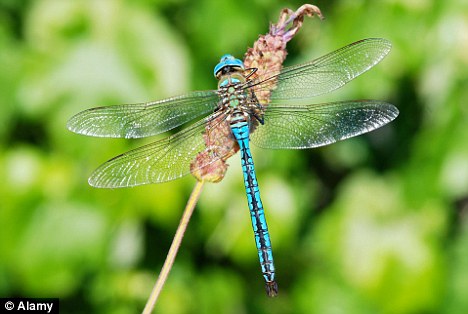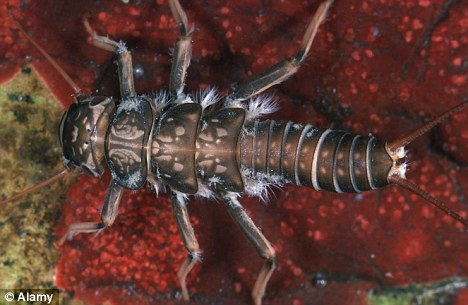据最新研究报道称,数百万前体型巨大的昆虫灭亡可能和其生活在水中的幼虫缺氧有关。
科学家们研究了过去这些大型昆虫,如的生活在3亿年前石炭纪的翼幅将近一米的蜻蜓,它们体积较小的后代。这些昆虫生活在水中的幼虫100多年来一直困扰着生物学家。
科学家们认为,在3亿年前这些生活在水中的幼虫能够得到充足的氧气,使得它们的体积充分成长,所以我们今天在化石上才能看到这些庞然大物。

翼幅长达75cm的蜻蜓在数百万年前就已经灭绝,可能是由于其在水中的幼虫缺氧。(图)
而当地球气候发生改变时,水中氧气的含量降低,这些体积巨大的幼虫无法得到充足的氧气生存,使得它们灭绝,而体积较小的却生存了下来。

这些石蝇的幼虫直接从水中获取氧气(图)
该研究发表在最新的《Plos One》杂志上,通过研究石蝇(Dinocras cephalotes)的水栖幼虫,和蜻蜓类、蜉蝣类类似,发现它们主要直接从水中得到氧气,并且这些幼虫对氧气变化的敏感程度要远高于它们的成虫。
负责这项研究的普利茅斯大学海洋生物学院的David Bilton博士和Wilco Verberk博士说道:“这些幼虫利用氧气的效率比它们生活在空中的成虫要低得多,这就解释了为何它们对于周围氧气含量的改变如此敏感,同时这也抑制了昆虫的成长体积。”
尽管之前已经有科学家提出这些体积巨大的昆虫的灭绝和氧气有关,但始终没有得到令人信服的证据。
巨大昆虫通常出现在各种科幻小说中,如迈克尔.克莱顿的侏罗纪公园中的巨大蜻蜓。(生物探索 Jun译)
生物探索推荐英文论文原文摘要:
Atmospheric Hypoxia Limits Selection for Large Body Size in Insects
Background
The correlations between Phanerozoic atmospheric oxygen fluctuations and insect body size suggest that higher oxygen levels facilitate the evolution of larger size in insects.
Methods and Principal Findings
Testing this hypothesis we selected Drosophila melanogaster for large size in three oxygen atmospheric partial pressures (aPO2). Fly body sizes increased by 15% during 11 generations of size selection in 21 and 40 kPa aPO2. However, in 10 kPa aPO2, sizes were strongly reduced. Beginning at the 12th generation, flies were returned to normoxia. All flies had similar, enlarged sizes relative to the starting populations, demonstrating that selection for large size had functionally equivalent genetic effects on size that were independent of aPO2.
Significance
Hypoxia provided a physical constraint on body size even in a tiny insect strongly selected for larger mass, supporting the hypothesis that Triassic hypoxia may have contributed to a reduction in insect size.







